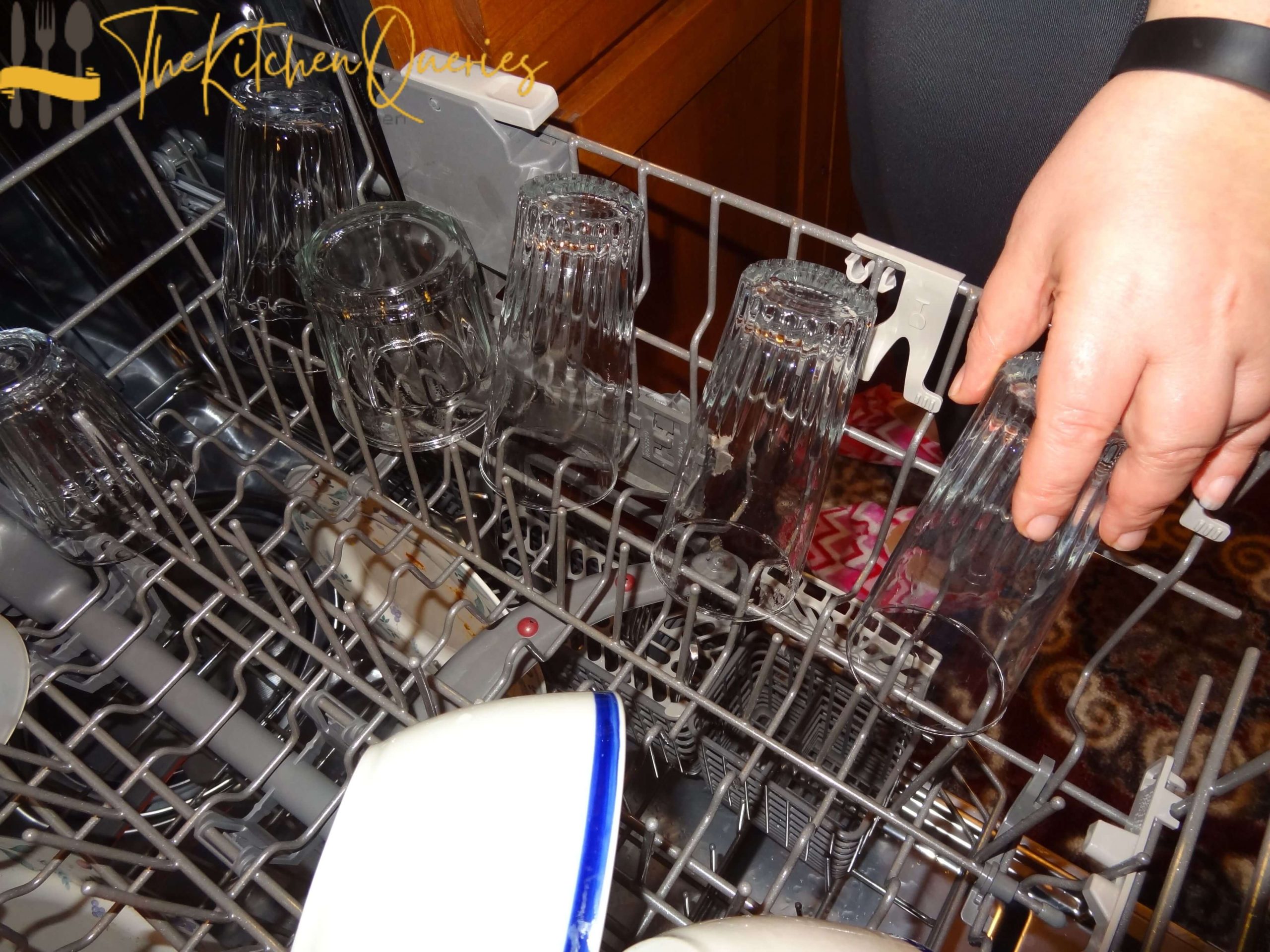Arranging dishes in the dishwasher might seem like a simple task, but it can significantly impact the efficiency and effectiveness of the cleaning process.
A well-loaded dishwasher not only ensures that your dishes come out sparkling clean but also saves water, energy, and time.
However, many of us may not be aware of the best practices for loading a dishwasher to achieve optimal results.
In this guide, we will walk you through step-by-step instructions on how to arrange dishes in the dishwasher and load it properly.
Whether you’re a seasoned dishwasher user or a novice, following these tips will help you make the most of this essential kitchen appliance.

Here’s a step-by-step guide on how to arrange dishes in the dishwasher and how to load it properly:
Step 1: Preparation
- Make sure your dishwasher is clean and free from any debris or leftover food particles.
- Check that all the dishwasher racks and spray arms are in their proper positions and are working correctly.
Step 2: Scrape and Rinse
- Scrape off any large food particles from the dishes before loading them into the dishwasher. You don’t need to pre-wash the dishes thoroughly, as modern dishwashers are designed to handle some food residues.
- If there are any stubborn or sticky residues, give those dishes a quick rinse before loading.
Step 3: Load Large Items First
- Start by loading large items such as pots, pans, and cutting boards on the bottom rack. Place them at an angle or on the sides to allow water and detergent to reach all the surfaces.
- Avoid blocking the spray arm’s rotation by ensuring that large items do not stick out too much.
Step 4: Load Plates and Bowls
- Arrange plates and bowls on the bottom rack between the tines (the vertical posts) to allow water to reach both sides of the dishes.
- Face plates towards the center and the back of the dishwasher to ensure adequate water coverage.
Step 5: Load Glasses and Cups
- Place glasses and cups on the top rack. Angle them slightly to prevent water from pooling inside.
- Avoid nesting glasses or cups inside each other as it can prevent proper cleaning.
Step 6: Load Cutlery and Utensils
- Place forks, knives, and spoons in the cutlery basket with the handles facing downwards for safe removal later.
- Mix up the cutlery to prevent them from sticking together, ensuring better cleaning.

Step 7: Load Small Items Last
- Load small and lightweight items like lids, small containers, and baby bottle parts on the top rack or in the designated sections.
- Avoid placing small items along the edges where they might fall through the gaps.
Step 8: Check the Spray Arm
- Make sure the dishwasher’s spray arm can rotate freely without any obstructions from the loaded dishes.
Step 9: Add Detergent and Rinse Aid
- Add the appropriate dishwasher detergent to the detergent dispenser based on the manufacturer’s guidelines.
- If your dishwasher has a rinse aid compartment, fill it with rinse aid to enhance drying and prevent water spots.
Step 10: Run the Dishwasher
- Select the appropriate wash cycle based on the type and amount of soiled dishes.
- Start the dishwasher and wait for the cycle to complete.
Step 11: Unload the Dishwasher
- Allow the dishwasher to complete the drying cycle before opening it to unload.
- Start unloading from the bottom rack first, as they are likely to be cooler and safer to handle.
Step 12: Empty the Dishwasher
- Return all the dishes, glasses, and cutlery to their proper places in the kitchen cabinets.

Precautions:
- Don’t overload the dishwasher, as it can lead to inefficient cleaning and potential damage to the dishes.
- Avoid stacking items directly on top of each other, as it may block water and detergent from reaching all surfaces.
- Check your dishwasher’s user manual for any specific loading instructions or recommendations from the manufacturer.
By following these steps and tips, you can maximize the efficiency of your dishwasher and achieve clean and spotless dishes with each load. Happy dishwashing!
Video Guide:
Frequently Asked Questions (FAQs):
1. Should I pre-wash dishes before loading them into the dishwasher?
Modern dishwashers are designed to handle some food residues, so there’s no need to pre-wash dishes thoroughly.
Simply scrape off large food particles to ensure optimal cleaning.
2. How do I prevent glasses from breaking during the dishwasher cycle?
To prevent glasses from breaking, ensure they are placed securely on the top rack and avoid nesting them inside each other.
Angle the glasses slightly to prevent water from pooling inside.
3. Can I load plastic containers in the dishwasher?
Most dishwasher-safe plastic containers can be loaded on the top rack.
However, check the manufacturer’s instructions to ensure they are dishwasher-safe.
4. What should I do if the dishwasher leaves water spots on my dishes?
If your dishwasher leaves water spots, consider using a rinse aid to enhance drying and prevent spots.
Also, ensure you’re using the right amount of dishwasher detergent for optimal results.
5. Is it okay to load stainless steel and non-stick cookware in the dishwasher?
Stainless steel cookware is generally safe for the dishwasher, but it’s best to hand wash non-stick cookware to preserve the coating’s longevity.
6. Can I load large serving utensils and cutting boards in the dishwasher?
Yes, you can load large serving utensils and cutting boards in the dishwasher.
Place them at an angle or on the sides of the bottom rack to allow water and detergent to reach all surfaces.
7. How often should I clean my dishwasher?
It’s essential to clean your dishwasher periodically to remove any buildup of food particles and mineral deposits.
Aim to clean the dishwasher once a month for optimal performance.
8. Can I use regular dish soap in the dishwasher?
No, regular dish soap should not be used in the dishwasher.
Use only dishwasher-specific detergents to prevent excessive sudsing and damage to the dishwasher.
Wrapping Up:
Mastering the art of arranging dishes in the dishwasher and loading it properly can transform your dishwashing routine.
By scraping and rinsing dishes, loading them strategically, and using the appropriate detergent and rinse aid, you can enjoy spotless, sanitized dishes with each cycle.
Remember to consider the size and shape of items, avoid overcrowding, and keep the spray arm unobstructed for optimal cleaning performance.
Properly loading your dishwasher not only ensures better results but also saves water and energy, contributing to a more sustainable household.
Next time you face a pile of dirty dishes, don’t fret. Follow the steps outlined in this guide, and you’ll become a dishwasher-loading expert in no time. Happy dishwashing!

I am an internet evenglits, a foodie, and a learner.

